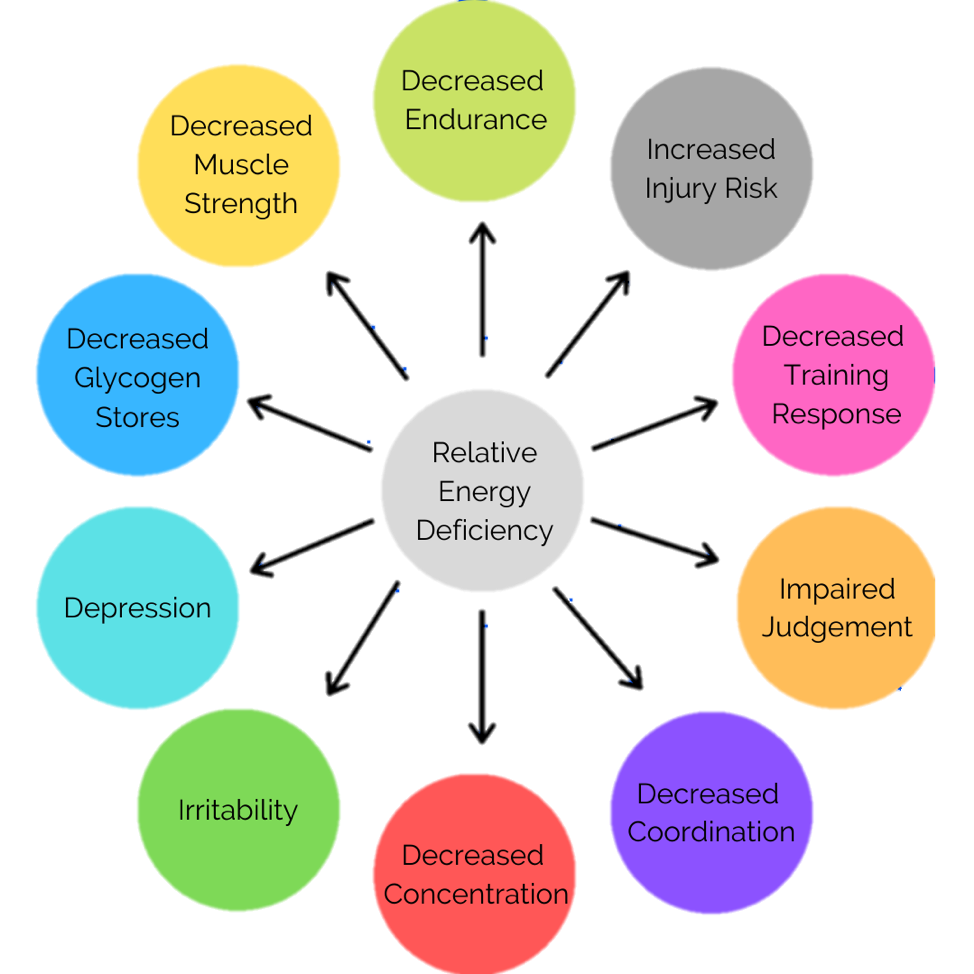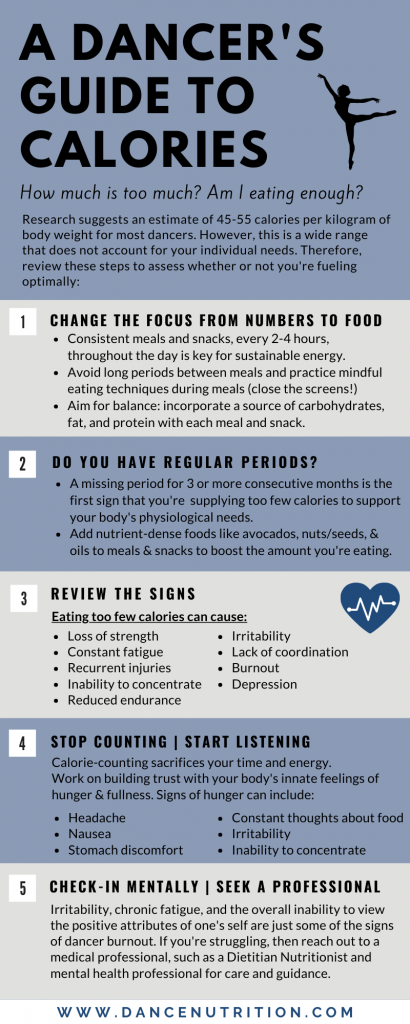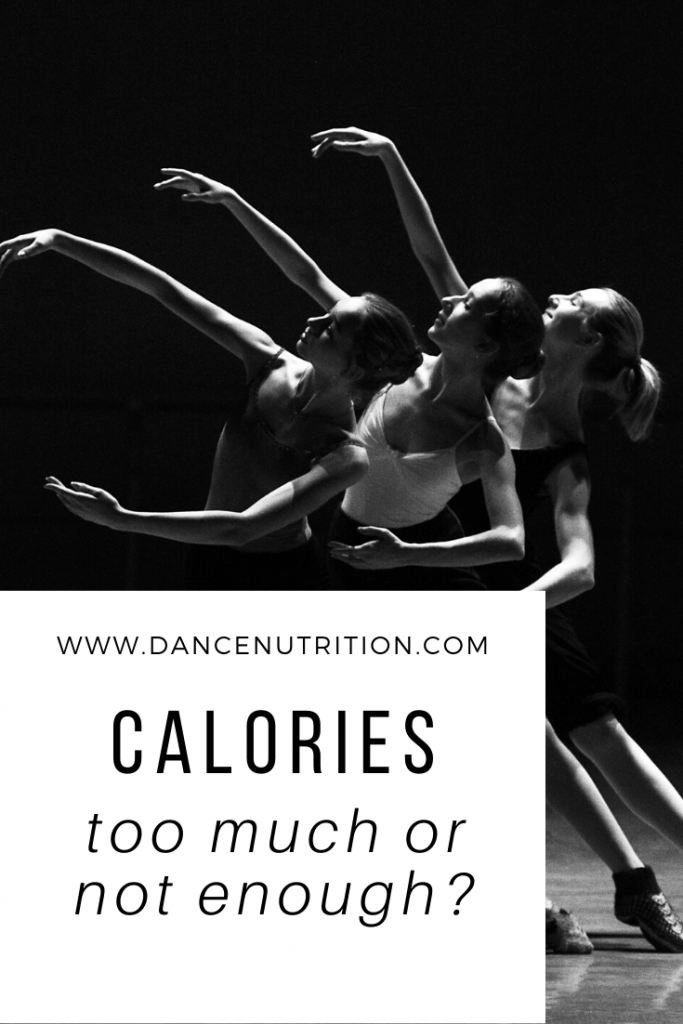For dancers, discussing calories often comes with varying perspectives and beliefs. The spectrum of curiosity over eating “too many” or “too few”— along with recommended ranges makes up most inquiries I receive. But how many calories should a dancer consume to sustain their demanding expenditure while maintaining optimal health? Let’s explore.
What are calories?
Calories are units of energy found in food and beverages that fuel our bodies’ everyday functions and physical activities. For dancers engaging in rigorous training, rehearsals, and performances, caloric needs are higher than the average individual. Many factors impact a dancer’s individual calorie needs:
- Activity Level: From intense rehearsals to high-energy performances, the frequency, duration, and intensity of your dancing will influence calorie requirements.
- Body Composition: Your body’s makeup, particularly muscle and fat mass, will impact your calorie needs.
- Individual Variations: Every dancer’s body is unique, and factors such as height, weight, age, and genetics play a role in determining how many calories are needed to support your metabolic rate.
The realities of calories for dancers
The fact is that most dancers and athletes alike severely underestimate their calorie needs— a result of either intentional or unintentional behaviors. High levels of activity are known to blunt hunger and as a result, busy dancers may have misguided hunger (or lack thereof) throughout the day.
Dancers are also more vulnerable to harmful body ideals that ignorantly inform what a dancer’s body “should” look like. Because of this, many dancers choose to intentionally eat less or reduce their caloric intake to lose weight. Calorie targets set forth by apps, Google, and coaches grossly underestimate the calorie needs of dancers. Even with the notion to swap dieting with “wellness,” behaviors like clean eating and calorie counting increase a dancer’s vulnerability to under-fueling.
Any dancer who is counting calories is likely not getting enough.
Am I eating enough as a dancer?
This is a legitimate concern, especially as you work hard to succeed as an artistic athlete. There are several signs that we should consider when the question of whether or not our daily caloric intake is enough.
10+ signs a dancer isn’t eating enough
- You’re constantly thinking about food.
- If you’re a dancer who gets a period, it’s become very irregular or nonexistent (more on this below).
- You’re struggling with unexplained digestive discomfort.
- You’re using food as a tool to cope during times of emotional distress.
- You’re struggling to feel energized in class.
- You’re attempting to abide by “clean” eating routines.
- You’re relying on unqualified sources for much of your nutrition information from
- You’re super busy and relying only on intuitive cues of hunger to dictate when to eat.
- You’re experiencing recurring injuries like stress fractures.
- You’re always cold!
- You’re religiously tracking calories to dictate how much to eat.
- You’re feeling irritable more often than not.
- You’re struggling to concentrate in class.
The consequences of not eating enough as a dancer
For dancers who get a period, sufficient caloric intake is most often evidenced by a consistent menstrual cycle. Functional Hypothalamic Amenorrhea occurs when those with normal regular cycles miss a period for 3 or more consecutive months or, in those with irregular cycles, miss a period for 6 or more consecutive months.

For dancers who do not get a period biologically, it can be harder to identify a caloric deficit. But this doesn’t mean that these dancers have any less risk. Relative Energy Deficiency in Sport (previously known as the Female Athlete Triad) can help to identify a broader range of negative health consequences that result from consistent undereating. Some of these include a lack of concentration, recurrent injuries, chronic fatigue, irritability, depression, loss of muscle strength, and decreased coordination. Here are a few more:
If you can relate to one or more of these symptoms, it may reflect your need to eat more. It’s recommended that all dancers consult with a Registered Dietitian Nutritionist and a medical doctor to evaluate their risk for hormonal imbalances related to energy deficiency.
Calories while eating intuitively
Intuitive eating is a non-diet approach that teaches us how to maintain a supportive relationship with both food and body. Throughout this process, we learn how to make choices surrounding food (and even exercise) based on our body’s signals, rather than on external goals set forth by diet and wellness culture. Our food choices aren’t solely based on what’s “good” or “healthy,” but rather, stem from what satisfies us and enables us to feel nourished mentally and physically.
While eating intuitively is an incredible skill for anyone to learn, it’s often a long-term goal for those coming from a history of restrictive eating. Consistent undereating, whether for weeks, months, or years, can impede one’s hunger cues as the body naturally responds to the caloric restriction with a subsequent reduction in metabolic rate.
With intentional and unintentional factors blocking a dancer’s ability to fuel intuitively, calorie awareness is sometimes an essential part of a dancer’s learning process. This is especially true for dancers needing to restore and gain weight. The difficulty with calorie awareness, however, is if a dancer develops obsessive tendencies around a calculated calorie goal. For this reason, it’s not only recommended that dancers refrain from relying too heavily on target calorie goals but also that they work alongside a Registered Dietitian Nutritionist if wanting to learn more about their daily needs.
But I have no idea if I’m eating enough calories (or too much)
Since calories provide the energy needed to perform and sustain basic metabolic functioning, then eating too few calories risks injury and nutrient deficiencies. And because calories are a widely confusing and sometimes misguided topic, I want to cover a few common questions:
I want to fuel my body sufficiently. How many calories should I aim for?
Calorie needs are difficult to measure precisely, but there are mathematical equations that can be used to roughly estimate one’s daily calorie needs. Some are based on gold-standard evidential support and others are based on nothing but a thumbs up from Google. The problem with any quick calculation is its inability to account for one’s true individual energy expenditure (or the number of calories the body is burning in one day).
The International Association of Dance Medicine suggests a “rough estimate of 45-50 calories per kilogram of body weight for females and 50-55 calories per kilogram of body weight for males,” which is based on research from the sports community (1,2,3- content warning: gender-exclusive language). This is a great starting point, but it won’t account for individual variations. It is therefore emphasized that anyone looking for specific guidance should seek the help of a Registered Dietitian Nutritionist.
Should dancers count calories?

In short, no. Counting calories is not a prerequisite to “health.” Counting calories will do more harm than good, especially when it comes to your mental health. Calorie-counting throughout your day sacrifices your time, which could otherwise be spent broadening your technique and working on your overall performance goals. As I mentioned earlier, any dancer counting calories is likely not getting enough. Here are a few additional sacrifices to consider when counting calories:
- Your social life will go downhill as dining out becomes a research-driven frenzy of what can and cannot fit into your daily calorie goal.
- You’ll lose out on the enjoyment of food as your daily choices depend primarily on a numbered target rather than on your personal food preferences.
- You’ll start feeling guilty if and when you break from your imposed calorie limit (and trust me… it’ll happen!)
As mentioned, calorie awareness may be helpful for dancers needing to restore and gain weight. You’ll want to make sure that your body is sufficiently fueled. Use the tools discussed in the next question to assess whether or not you need to boost your intake.
But what if a dancer is eating too many calories?
“Over”-eating and portion control are two major points of interest for many dancers and I discuss them further in the following articles and videos. Identifying the source of your concern and learning how to eat mindfully are two helpful strategies. Check out the following videos for additional guidance:



